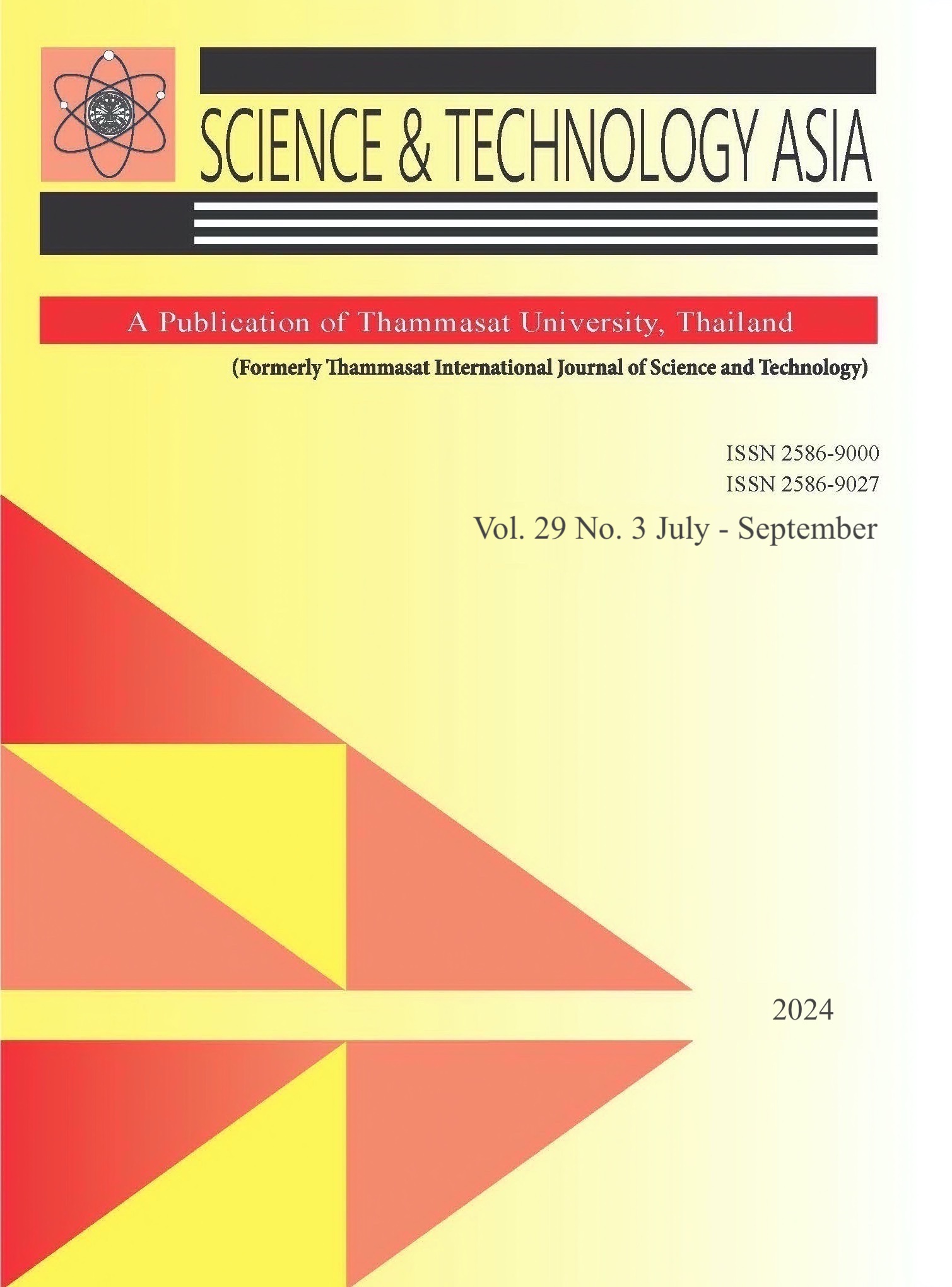Antibiofilm Activities of Quercetin on ESKAPE Pathogens: An in-silico Analysis
Main Article Content
Abstract
The treatment of ESKAPE pathogens (Enterococcus faecium, Staphylococcus aureus, Klebsiella pneumoniae, Acinetobacter baumannii, Pseudomonas aeruginosa, and Enterobacter spp.) is difficult due to their antibiotic resistance, which is mostly attributed to the biofilm matrices produced by these bacteria. These biofilms are notoriously difficult to counter though some natural compounds show promise. Quercetin, a plant-derived flavanol is found to have antibiofilm activities against these ESKAPE pathogens. In this study, molecular docking experiments demonstrated a strong affinity between quercetin and biofilm forming proteins of ESKAPE pathogens, namely 3TIP, 3ZYB, 5KED, 5FCE, 5D6H and 6YF6, which indicates that quercetin could be effective for eradicating ESKAPE pathogens. Optimization of parameters for best molecular interaction was studied using Box Behnken Response Surface Methodology.
Article Details

This work is licensed under a Creative Commons Attribution-NonCommercial-NoDerivatives 4.0 International License.
References
Ghosh S, Lahiri D, Nag M, Dey A, Pandit S, Sarkar T, Pati S, Abdul Kari Z, Ishak AR, Edinur HA, Ray RR. Phytocompound mediated blockage of quorum sensing cascade in ESKAPE pathogens. Antibiotics. 2022 5;11(1):61.
Mu Y, Zeng H, Chen W. quercetin inhibits biofilm formation by decreasing the production of EPS and altering the composition of EPS in Staphylococcus epidermidis. Frontiers in Microbiology. 2021; 12:631058.
Xie TT, Zeng H, Ren XP, Wang N, Chen ZJ, Zhang Y, Chen W. Antibiofilm activity of three Actinomycete strains against Staphylococcus epidermidis. Letters in applied microbiology. 2019;68(1):73-80.
Omwenga EO, Hensel A, Pereira S, Shitandi AA, Goycoolea FM. Antiquorum sensing, antibiofilm formation and cytotoxicity activity of commonly used medicinal plants by inhabitants of Borabu sub-county, Nyamira County, Kenya. PLoS ONE. 2017;12(11): e0185722.
Singh, V. K., Kavita, K., Prabhakaran, R., and Jha, B. Cis-9-octadecenoic acid from the rhizospheric bacterium Stenotrophomonas maltophilia BJ01 shows quorum quenching and antibiofilm activities. Biofouling. 2013;29: 855-67.
Salvamani S, Gunasekaran B, Shaharuddin NA, Ahmad SA, Shukor MY. Antiartherosclerotic effects of plant flavonoids. BioMed Research International. 2014;2014.
Batiha GE, Beshbishy AM, Ikram M, Mulla ZS, El-Hack ME, Taha AE, Algammal AM, Elewa YH. The pharmacological activity, biochemical properties, and pharmacokinetics of the major natural polyphenolic flavonoid: quercetin. Foods. 2020;9(3):374.
Memariani, H., Memariani, M., & Ghasemian, A. An overview on antibiofilm properties of quercetin against bacterial pathogens. World journal of microbiology & biotechnology. 2019; 35(9): 143.
Moldovan CV, Savu M, Dussert E, Aboubacar H, Sarbu LG, Matiut S, Cudennec B, Krier F, Ravallec R, Birsa LM, Stefan M. Synthetic Flavonoid BrCl-Flav-An Alternative Solution to Combat ESKAPE Pathogens. Antibiotics. 2022;11(10):1389.
Vipin C, Saptami K, Fida F, Mujeeburahiman M, Rao SS, Athmika, Arun AB, Rekha PD. Potential synergistic activity of quercetin with antibiotics against multidrug-resistant clinical strains of Pseudomonas aeruginosa. PLoS ONE. 2020;15(11):e0241304.
Musini, A., Singh, H. N., Vulise, J., Pammi, S. S. S., & Archana Giri. Quercetin’s antibiofilm effectiveness against drug resistant Staphylococcus aureus and its validation by in silico modeling. Research in microbiology. 2024; 175(3): 104091.
Tagrida, M., Palamae, S., Saetang, J., Ma, L., Hong, H., & Benjakul, S. Comparative Study of Quercetin and Hyperoside: Antimicrobial Potential towards Food Spoilage Bacteria, Mode of Action and Molecular Docking. Foods, 2023; 12(22):4051.
Gopu V, Meena CK., & Shetty PH. Quercetin Influences Quorum Sensing in Food Borne Bacteria: In-Vitro and In-Silico Evidence. PloS one. 2015;10(8):e0134684.
Lahiri D, Nag M, Sarkar T, Dutta B, Ray RR. Antibiofilm activity of 𝛼-amylase from Bacillus subtilis and prediction of the optimized conditions for biofilm removal by response surface methodology (RSM) and artificial neural network (ANN). Applied Biochemistry and biotechnology. 2021; 193:1853-72.
Azargohar R, Dalai AK. Production of activated carbon from Luscar char: experimental and modeling studies. Microporous and mesoporous materials. 2005;85(3):219-25.
Sarkar T, Salauddin M, Hazra SK, Chakraborty R. Comparative study of predictability of response surface methodology (RSM) and artificial neural network-particle swarm optimization (ANN-PSO) for total colour difference of pineapple fortified rasgulla processing. International Journal of Intelligent Networks. 2020; 1:17-31.


